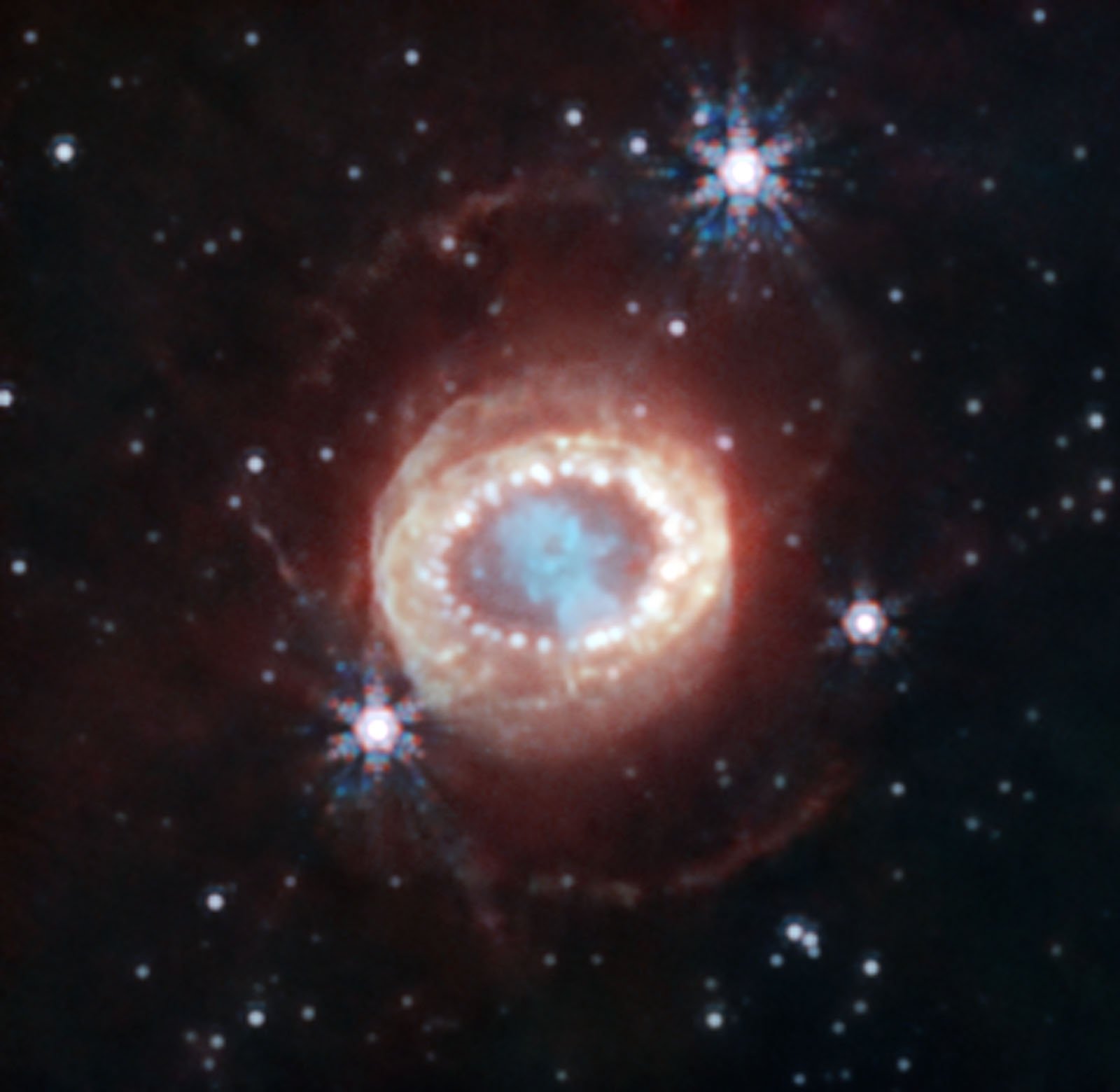Scientists using the James Webb Space Telescope (JWST) have made a monumental discovery, finding evidence for a neutron star at the heart of a young supernova remnant.
“NASA’s James Webb Space Telescope has found the best evidence yet for emission from a neutron star at the site of a recently observed supernova,” writes NASA in a press release. The supernova, SN 1987A, was a core-collapse supernova, which means that the remains of the explosion, which get highly compact, formed either a black hole or a neutron star.
Scientists have long searched for direct evidence of this sort of compact object. Indirect evidence for the existence of a neutron star has been found, but Webb’s discovery marks the “first time that the effects of high-energy emission from the probable young neutron star have been detected.”
Supernova SN 1987A occurred 160,000 light-years away in the Large Magellanic Cloud. It was first observed in February 1987, and following the lifecycle of a typical supernova explosion, its brightness peaked a few months later in May. It has been consistently changing and evolving in the years since, providing astronomers a chance to witness a fascinating and important cosmological process in real-time. It was the first supernova that could be seen from Erath with the naked eye since Kepler’s Supernova was observed in 1604.
In February 1987, a couple of hours before the first visible light observations of SN 1987A occurred, three observatories on Earth detected a burst of neutrinos that lasted only a few seconds. These blips of neutrinos provided vital evidence to help scientists understand how core-collapse supernovae occur. However, the smoking gun remained elusive even as the theories expanded and developed.
That is, until the James Webb Space Telescope.
“Webb began science observations in July 2022, and the Webb observations behind this work were taken on July 16, making the SN 1987A remnant one of the first objects observed by Webb. The team used the Medium Resolution Spectrograph (MRS) mode of Webb’s MIRI (Mid-Infrared Instrument), which members of the same team helped to develop. The MRS is a type of instrument known as an Integral Field Unit (IFU),” NASA explains.

IFUs can image an object and capture spectral data simultaneously. The IFU creates a spectrum for each pixel, enabling scientists to see spectroscopic differences across an object. By analyzing Doppler Shift of each spectrum, it’s also possible to determine velocity at each position.
Spectral analysis of SN 1987A showed a strong signal for ionized argon from the center region of the ejected material that surrounds the original site of the SN 1987A supernova event.
Later observations using Webb’s Near-Infrared Spectrograph (NIRSpec) showed evidence of heavily ionized chemical elements at shorter wavelengths, including five times ionized argon. This means the argon atoms lost five of their 18 total electrons. This ionization requires energy, like exceptionally energetic photons. And, of course, these photons must come from somewhere.
“To create these ions that we observed in the ejecta, it was clear that there had to be a source of high-energy radiation in the center of the SN 1987A remnant,” Claes Fransson of Stockholm University and the lead author of a new research paper says. “In the paper we discuss different possibilities, finding that only a few scenarios are likely, and all of these involve a newly born neutron star.”
More observations are planned using Webb and numerous ground-based telescopes. The team hopes to learn more about what is occurring in SN 1987A’s core.
The complete research paper is available in Science. “Emission lines due to the ionizing radiation from a compact object in the remnant of Supernova 1987A” was authored by C. Fransson and 33 additional authors.
